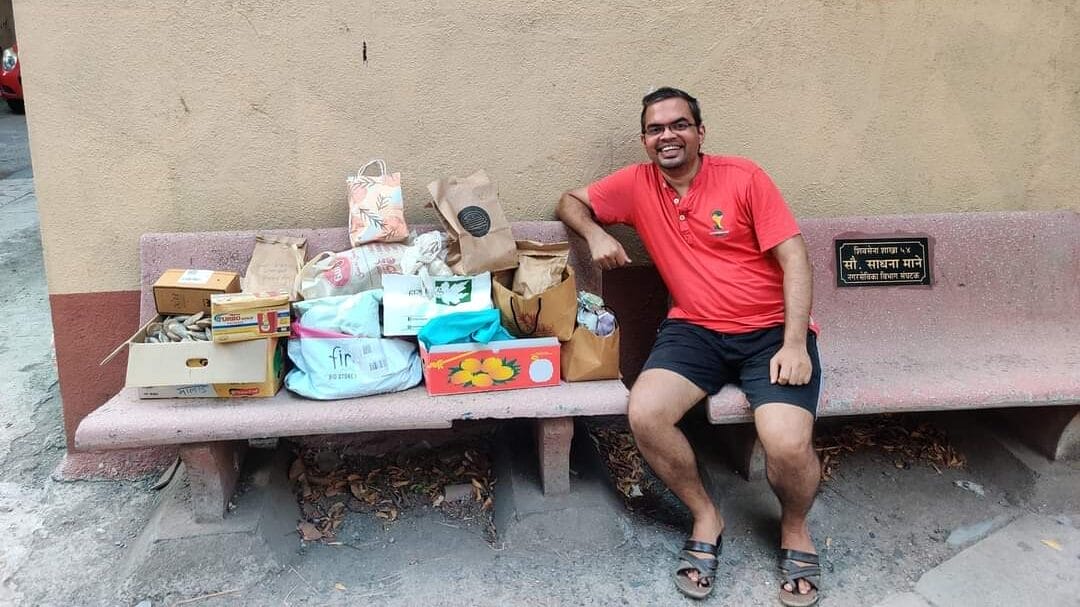Most of us in Mumbai, eat mangoes daily during summer. In my society at Goregaon East, some of the residents and I decided to collect mango seeds from our neighbours. We gave them to Mission Green Mumbai, an NGO Mumbai, which takes care of planting the seeds for a greener society.
When I first saw the video on saving mango seeds posted by the NGO, almost a year ago, I thought it was a wonderful idea. It has been a year since we started working on this, and so far we have managed to collect around 2500 seeds.
How did we collect mango seeds?
In a common area, adjacent to our society’s gate, I placed a box for everyone to donate their seeds. I told everyone that they are to save the seeds, soak them in water, clean them, sun dry them, and then parcel them to us between 8 am to 5 pm. People can also bring their own boxes with seeds and place them there.
We carry out the collection on a fortnightly basis. We post these seeds every 6 months.

Usually people collect the seeds for a few days, sometimes even weeks, and send them in bulk. However, older seeds may rot within two weeks. So, we advise everyone to send the seeds as and when they eat the mangoes. However, this takes some convincing, as discarding a seed every other day in this box might be difficult for them.
People also bring seeds of other fruits such as jamun and jackfruit.
Read more: How to build a micro forest in your backyard
What happens when seeds are sent in?
Once we receive the seeds, my teammates and I segregate them based on whether they have started rotting or not. After that, we package them and post it to the NGO, which then plants these seeds.
The NGO has developed several nurseries, where they grow these seeds. Then they germinate the seeds, by covering them in soil and watering them. Once they sprout, the NGO places the seeds into small plastic bags, where the plants begin to grow for the next 2-3 months.
Once the plants grow to a good height and are healthy, they graft it into a particular variety of mango. They then turn them into healthy saplings and send them to farmers in different parts of the country for free.

Challenges with collection and cultivation
Currently the organisation has set a target of collecting 10 lakh seeds per year. While this may sound like a lot, only around 10% of these seeds, actually grow into mango trees. Mango trees are difficult trees to grow, they are water intensive and require a lot of space. Due to such a low rate of germination, it is essential to collect a large quantity of these seeds, so that we get a good crop of mangoes for the year.
Last year they collected around 3-4 lakh seeds all over India, and this year the number went up to 5-7 lakh.
Read more: Why the growth of urban agriculture during the lockdown is a promising trend
Collecting enough seeds to meet such targets has been difficult. That is why many of our teammates try to convince or persuade people in our neighbourhoods. Many people living in our society are part of a Whatsapp group, where we discuss various civic issues in our areas as well as issues in our apartments. Some of these include proper solid waste management, rainwater harvesting and more.
We introduced the mango seed initiative via this group. Initially the response was quite low. We personally met many of our neighbours and spoke to them about the need for collecting these seeds. Since then, we have seen a huge spike in the number of mango seeds delivered to the box. While last year the number was at 1500, this year we collected around 2400.
Read more: Alexa, water the plants! How this techie rigged a remote controlled garden watering system
Seeds for today, mangoes for tomorrow
So far our main means of coordination has been Whatsapp. I am also part of a Whatsapp group of other community leaders, who organise mango seed collection. They send the seeds from their societies and apartments to the NGO. Currently, few societies in Ghatkopar, Goregaon, and Andheri are actively doing seed collection.

Mango seed collection can help alleviate the reduced mango counts in India. Mangoes attract a lot of parakeets, hornbills, bats, flying foxes and pigeons. They house a variety of insects like caterpillars. When mango production reduces – like this year due to droughts and extreme heat – their prices increase significantly.
If we don’t reuse these seeds, they will end up as wet waste in a landfill, unused, and rotting away. From my experience, citizen mobilising around seed collection goes a long way, inspiring people to even save seeds from other fruits to be planted. The key is personal interaction and discussion with the people around you on what can be done with waste.
| If you are interested in mobilising your community to save mango seeds, then you can contact me or Mission Green Mumbai to learn more. |